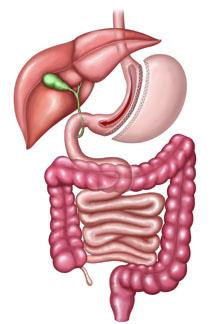For patients in the St. Louis and outlying regions
Sleeve gastrectomy is a surgical weight loss procedure in which surgeons remove a large portion of the stomach in a vertical fashion, leaving the organ about the size and shape of a banana or sleeve. Following the procedure, the stomach holds approximately one-tenth its previous capacity. The procedure restricts the amount of food a person can eat before feeling full, but does not decrease the absorption of food. However, the removal of most of the stomach may decrease production of an appetite-stimulating hormone called ghrelin.

Sleeve gastrectomy historically was performed as a first-stage operation followed by another weight loss procedure such as a duodenal switch or Roux-en-Y gastric bypass (RYGBP). The duodenal switch – formally known as a bilio-pancreatic diversion with a duodenal switch (BPD-DS) – is an operation that includes 1) a sleeve gastrectomy, 2) re-routing of food away from much of the small intestine to partially prevent absorption of food, and 3) re-routing of bile and other digestive juices. An RYGBP is an operation that divides the stomach and creates a small upper stomach pouch in order to decrease intake of food. The purpose of the sleeve gastrectomy as a first-stage operation was to decrease weight – by decreasing intake of food – and reduce surgical risks at the time of the second operation. Sleeve gastrectomy now is also being used as a primary operation with outcomes comparable to RYGBP.
Washington University bariatric surgeons perform the sleeve gastrectomy using a minimally invasive, or laparoscopic, approach. To gain access to the abdominal cavity, the surgeon makes small incisions in the abdomen. Surgical instruments are inserted through ports, which are placed into the incisions. A video camera called a laparoscope provides a view of the abdomen during the procedure.
Candidates for laparoscopic sleeve gastrectomy (LSG) generally have the same indications for surgery and age restrictions as those who undergo RYGBP. They must be morbidly obese, defined as being more than 100 pounds over ideal body weight or having a body mass index above 35 kg/m2. Candidates must have tried medical treatments for obesity and failed to maintain weight loss. Each patient is evaluated individually to determine the best surgical treatment for him or her.
The LSG procedure may still be used as a first-stage operation followed by another weight loss procedure.
Complications from LSG may include bleeding inside the abdomen; obstruction of the stomach; and minimal complications related to decreased absorption of some vitamins and nutrients. Information on “morbidity and mortality” in 36 studies of patients undergoing LSG may be found in the “Updated Position Statement on Sleeve Gastrectomy as a Bariatric Procedure” by the Clinical Issues Committee of the American Society for Metabolic and Bariatric Surgery.
Surgeons who perform this procedure:
For more information, call 314-454-7224.
More information about LSG can be found at:
Weight Control Informational Network (WIN) (informational service of National Institute of Diabetes and Digestive and Kidney Diseases [NIDDK])